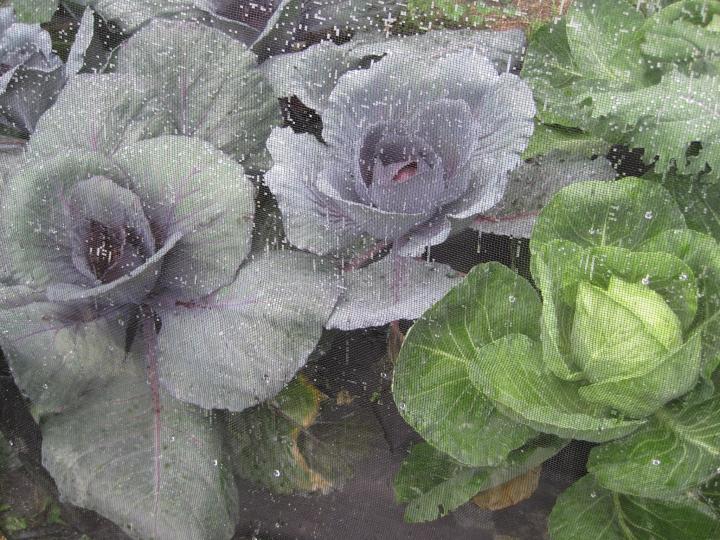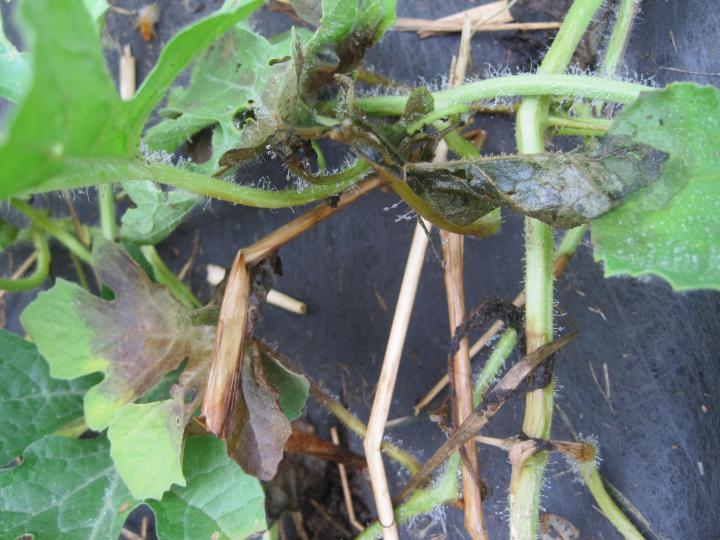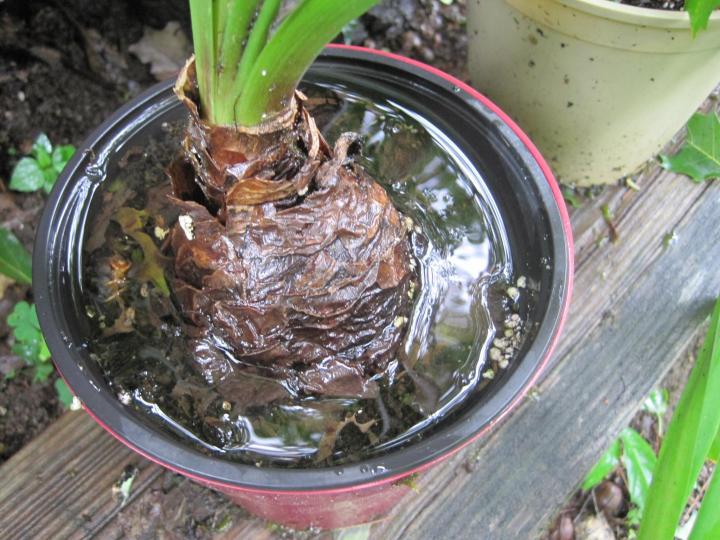While 93% of the West is in some level of drought, other regions are being inundated with rain. After a hot dry June in my neck of the woods, we got 3 times our monthly rainfall in the first 2 weeks of July and another 3 inches just yesterday! What’s a wet gardener to do? See 7 tips to manage your garden after too much rain.
We were lucky to only get 3 inches of rain this time. Nearby towns had over 5 inches in 24 hours. We keep hoping for a few hot, sunny days to dry things out, but more cool, rainy weather is in the forecast. The ground is saturated in places, but we live on a hillside, so much of the water drains quickly and most of our plants are in raised beds. There are still plenty of soggy spots though.

Even this rugged hollyhock is no match for a deluge of rain.
In between storms, we survey the damage, tie up and support battered plants, dump excess water out of containers, and squish Japanese beetles and potato bugs. The rain doesn’t seem to bother them at all.

While the cole crops like broccoli, cabbage and kale seem to be thriving in the cool dampness other plants are suffering, the cucurbits especially.
What Happens When There is Too Much Rainfall
So we got a bit of rain, what’s the worst that can happen?
- Disease. Bacterial and fungal diseases thrive in wet weather. The leaves on our cukes, squashes, and melons are showing signs of fungal disease. Even powdery mildew, which usually thrives in dry weather, is on the attack. I’d like to remove as many of the damaged leaves as possible but you really should avoid working with your plants while they are wet. That means delaying weeding and harvesting too. We are just starting to get some green beans but I hate to pick them while the leaves are wet because it spreads disease.
- Lack of pollination. Rain keeps the pollinators from doing their job, so many cucumber, squash, and melon flowers are not being pollinated. Immature fruits form, but then just drop off.
- Rapid weed growth. Even without heat and sunny weather, the weeds are growing like weeds!
- Insects. Snails and slugs love these conditions, the earwigs are out of control, caterpillars are everywhere, and Japanese beetles have moved in.
- Splitting fruits. Many fruits will suck up more water than their skins can accommodate, which results in split fruit. Tomatoes, melons, and cabbages are notorious for this. Our giant ‘Kossack’ kohlrabis start splitting as soon as the heavy rains set in.

This yucky fungus is rotting the leaves, fruits, and vines on many of our cucurbits.
What’s a Rained-On Gardener to Do?
- Side-dress your plants with a granular organic fertilizer to replace nutrients that get washed out of the soil. This is especially a problem with container grown plants.
- Avoid compacting the soil by not walking on muddy ground. Stay off those squishy spots until they dry out and don’t dig or till waterlogged soil.
- If you fear some of your treasured plants might not survive the deluge, take some cuttings. The stems will be full of water and should root easily.
- Move containers to higher ground and hanging plants away from overflowing roof gutters. Check pots to be sure their drainage holes aren’t plugged.
- Rake back some of the mulch to give the soil a chance to dry out.
- Work to improve drainage where you can. Reroute roof runoff away from the garden, and consider making raised beds in the lowest areas.
- Plant a rain garden in a spot that is chronically wet. (See story on Rain Gardens for more info.)

This poor amaryllis was in a pot with no drainage and became totally waterlogged.
If your property is in a low lying area subject to serious flooding, your garden may be the last thing you are concerned about. If flood water does inundate your yard, as long as it drains away in 24 hours, most of your plants should be able to recover and trees can survive up to a week in moving water.
I’m starting to feel like Annie: The sun won’t come out tomorrow—but maybe next week?
Not enough water? See our article on watering wisely during drought.
See our When to Water Guide for more information on how and when to water popular vegetables.


Comments